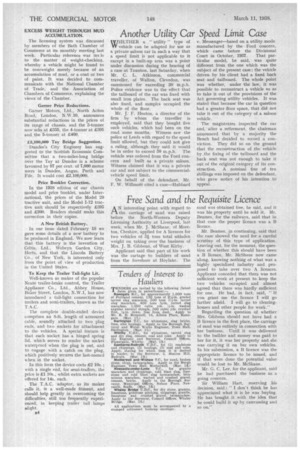Another Utility Car Speed Limit Case
Page 38

If you've noticed an error in this article please click here to report it so we can fix it.
VII/IIETIIER a " utility " type of VI' vehicle can be adapted for use as a private saloon car in such a way that a speed limit is not applicable to it except in a built-up area was a point under discussion during the hearing of a case at Taunton, last Saturday, when Mr, C. L. Atkinson, commercial traveller, of Walton, Clevedon, was summoned for exceeding 30 m.p.h. Police evidence was to the effect that the tailboard of the car was fixed with small iron plates. The back seat was also fixed, and samples occupied the whole of the floor.
Mr. J. F. Heaton, a director of the firm by whom the traveller is employed, said that they bought five such vehicles, which had been on the road some months, Witness saw the police at Leeds with regard to the speed limit allowed, but they could not give a ruling, although they said it would be in order to exceed 30 m.p.h. The vehicle was ordered from the Ford concern and built as a private saloon. Witness claimed that it was a private car and not subject to the commercialvehicle speed limit.
On behalf of the defendant, Mr. F. W. Willmott cited a case—Hubbard v. Messenger—based on a utility mode manufactured by the Ford concern, which came before the Divisional
Court in October, 1937. That particular model, he said, was quite different from the one which was the subject of the present case ; the vehicle driven by his client had a fixed back seat and tailboard. The whole point was whether, under the law, it was possible to reconstruct a vehicle so as to take it out of the provisions of the Act governing utility vehicles. It was stated that because the car in question had a greater floor space, that did not take it out of the category of a saloon vehicle.
The magistrates inspected the car and, after a retirement, the chairman announced that by a majority the Bench had decided to record a conviction. They did so on the ground that the reconstruction of the vehicle by the fixing of the tailboard and the back seat was not enough to take it out of the original category of its construction. A nominal fine of ten shillings was imposed on the defendant, who gave notice of his intention to
















































































